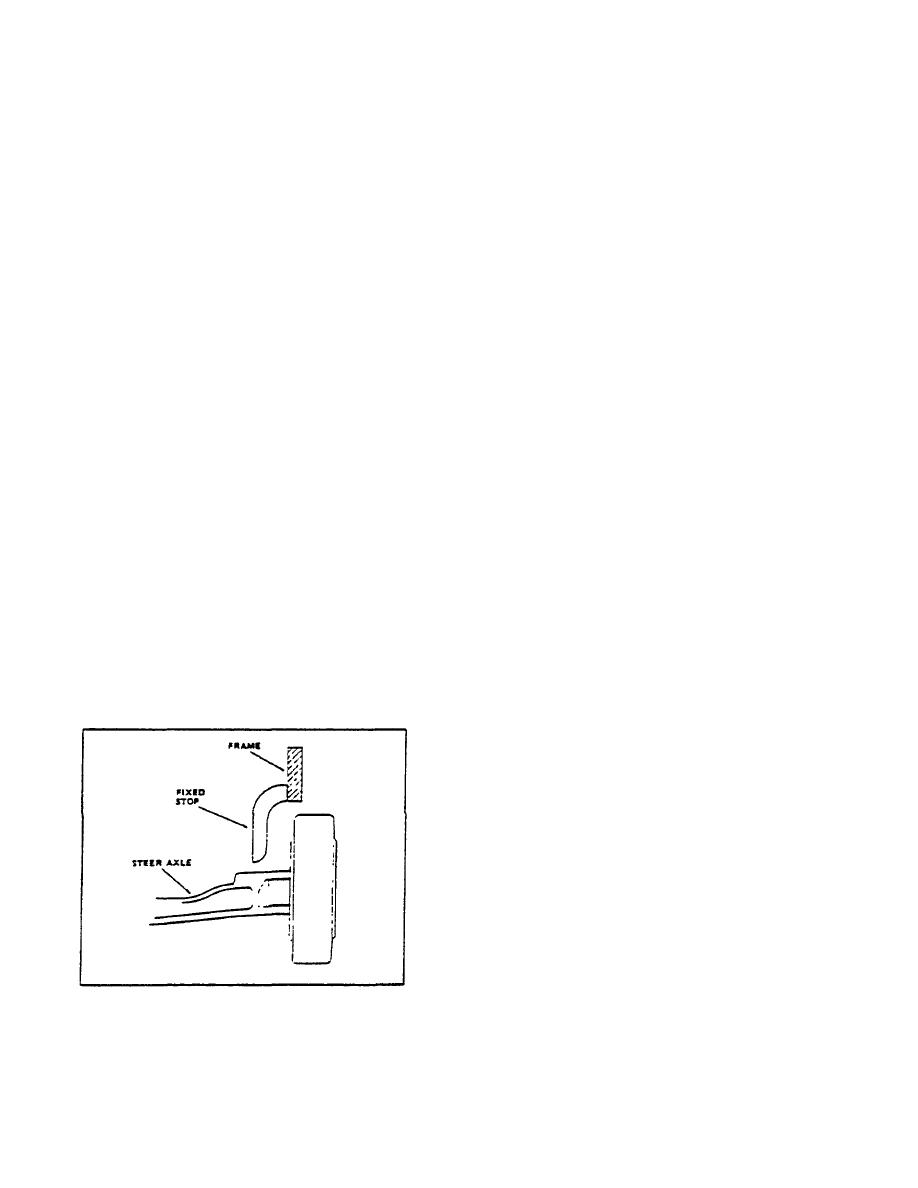 |
|||
|
|
|||
|
|
|||
| ||||||||||
|
|
 TM 10-3930-644-14&P
NO.
INSPECTIONS
DAILY
Turn the steer wheels to full right and to full left
positions. Visually check positions of both axle stops;
make certain they are not missing, bent, or otherwise
3.
Battery
X
damaged.
4.
Engine Oil Level
X
5.
Fuel rank
X
2. Overhead Guard - Inspect welds and hardware
6.
Radiator Coolant Level
X
attaching overhead guard to the truck proper.
7.
Tires
X
Make sure all attaching hardware is in place and
8.
Hourmeter
X
all welds and structural members are secure.
9.
Accelerator Pedal
X
3. Battery - Check condition of battery as described
(Operational Check)
in Topic 5 BATTERY. Also, make sure that the
10.
Brakes (Operational Check)
X
battery cables are not damaged or loose and
11.
Steering (Operational Check)
X
that the connector lugs are clean and : securely
12.
Lifting and Lowering Speed
X
attached.
(Operational Check)
4. Engine Oil Level - Check level with dipstick. If
13.
Forward and Backward Tilt
X
necessary, add oil to raise level to FULL mark.
(Operational Check)
Refer to Topic 6 in this manual titled
14.
Unusual Noise (Operat ional
X
LUBRICANT SPECIFICATIONS for proper oil
Check)
recommendation.
15.
Fire Extinguisher
X
5. Fuel Tank - Fill fuel tank it end of each workday;
J. DAILY CHECK LIST EXPLANATION
this practice will prevent the condensation of
The following explanations correspond to the inspections
moisture.
in the Daily Check List. it is necessary to perform these
inspections daily. Should any discrepancy be found, it
6. Coolant Level - Maintain coolant level
should be reported to the supervisor or the responsible
approximately 1-inch below bottom of radiator
maintenance personnel.
filler tube. Add clean fresh water or antifreeze
as required.
1. Steer Axle Stops Check the steer axle stops at
the beginning of each work shift. These stoops
7. Tires - Check pressure of pneumatic tires. If
are welded to the truck frame in such position
necessary, fill to pressure recommended in the
that one is directly above each of the steer axle
Maintenance Manual. Check tires for excessive
yokes (Fig 4-14).
wear and damage. Unevenly worn or badly
damaged tires will vibrate excessively and cause
hard steering. Remove steel chips and other
foreign materials from tire treads to prevent
further damage.
8. Hourmet er - Turn key switch ON and make sure
hourmeter is energized.
9. Accelerator Pedal - The truck should accelerate
smoothly from slow to fast speed.
10. Brakes - The brake pedal should have 1/2-inch
free play when it is depressed. The truck should
stop with normal brake pressure. When pedal is
fully depressed, some reserve distance should
remain. Check during operation.
11. Steering - The truck should steer smoothly and
Figure 4-14. Steer Axle Stop
freely. Check during operation.
1-12
|
|
Privacy Statement - Press Release - Copyright Information. - Contact Us |